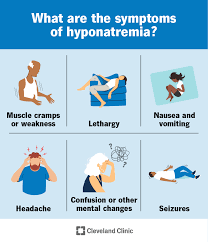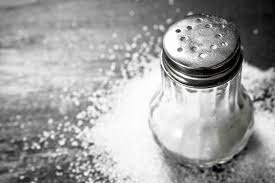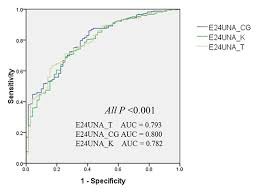Introduction
For years, the fertility conversation has centered almost exclusively on the female biological clock. We’re all aware that a woman’s fertility peaks in her twenties and plunges in her late thirties. Yet an increasing number of scientific studies is revealing a less-discussed but no less pertinent biological reality: male fertility is not ageless.
While it is true that men make sperm continuously throughout their lives, a man’s reproductive capacity, as well as the health of his sperm, does decline with age. Not a sudden, drastic drop-off, but a consistent and significant decline that can affect how long it takes to get pregnant, the health of the pregnancy, and the health of the child. This comprehensive guide will explore the science behind this decline, provide detailed information on how sperm count and quality change over time, and offer actionable advice for men wishing to optimize their reproductive health.
The Biological Reality: Male Fertility Isn’t Ageless

The fundamental difference between female and male fertility is the generation of sperm. Females are born with a finite number of eggs, which age as they mature. Men, on the other hand, generate new sperm throughout their lives in a process called spermatogenesis. This has led to the common myth that male fertility is an evergreen, stationary process.
Contemporary research does confirm, however, that while the factory never closes, the amount and quality of the product do begin to drop. The biological processes behind the drop are complex and complicated. According to a review in BioMed Central, a man’s fertility is affected by reduced accessory gland function, aging effects on the testes, fewer germ cells, and loss of ability for the body to repair genetic damage.
The decline is not simply a matter of number. While sperm count is one critical parameter, a full characterization of male fertility also includes other critical parameters, all of which are influenced by age:
- Sperm Motility: The percentage of sperm that are moving and moving correctly (i.e., forward progression).
- Sperm Morphology: The percentage of sperm that have normal shape and structure (e.g., normally developed head, mid-piece, and tail).
- Semen Volume: The amount of fluid that is ejaculated.
- DNA Integrity: The wholeness and lack of fragmentation of the genetic material carried by the sperm.
In aging men, each of these parameters begins to change, with a compounding effect that can have a profound impact on the likelihood of conception and the health of the resulting pregnancy.
Male Fertility Age Chart: Optimum Performance and Progressive Change
To provide a clear picture of how these parameters change, we can look at the average numbers derived from fertility studies. The following numbers reflect a gradual decline in sperm count, with the best concentration and quality parameters being in the youngest males.
Age Range\tAverage Sperm Count (million/mL)
Under 25\t60–100
26–30\t55–85
31–35\t45–75
36–40\t40–60
41–45\t35–55
46–50\t30–50
51–55\t20–40
56–60\t15–30
60+\t10–25
Based on data from the Prashanth Fertility Research Centre

Export to Sheets
To provide a more comprehensive view, let’s combine this with an analysis of motility and morphology.
Age Range\tAvg. Sperm Count (million/mL)\tMotility (% moving)\tMorphology (% normal)
18–29\t53.8–127.1\t52–66\t11.5–20.5
30–39\t54.5–117.7\t48–61\t9–19
40–49\t47.4–100.8\t47–60\t9–16
50+\t(Further decline)\t(Further decline)\t(Further decline)
Export to Sheets
Data compiled from various clinical studies and fertility center data.
Analyzing the Data by Age Group:
20s: This is the absolute peak of male fertility. Sperm count is highest, and quality factors like motility and morphology are optimal. For most men in this decade, fertility is robust, and conception is generally a matter of timing and a lack of other issues.
30s: This is the decade when subtle decline creeps in. Sperm count remains high, but you begin to see a slow decline in motility and morphology. This is when the biological clock begins its slow, quiet ticking. Most men in their 30s will still not experience any problems with conceiving, but the numbers demonstrate the start of a decline.
40s: This is a more significant change. Sperm count declines more significantly, and the decline in quality parameters becomes more pronounced. This is also the age group where the risk of sperm DNA fragmentation and other genetic issues begins to rise, a very critical parameter we will discuss in the next section.
50s and Beyond: While still possible and many men can still father a child, the decline in fertility is notable. Average sperm count can fall below the World Health Organization’s (WHO) low fertility threshold (15 million/mL), and sperm quality is much poorer than in a man’s younger years.
Remember that these are average rates, and individual results can differ dramatically depending on genetics, lifestyle, and overall health.
More Than Just Numbers: How Age Impacts Sperm Quality
A high sperm count is not the entire story. Sperm quality is actually more important for a successful pregnancy and the health of the child. As men age, sperm quality declines in some vital respects.
Motility and Morphology: The Swimmers and Their Shape Sperm must swim quickly and in a straight line to be capable of reaching and fertilizing the egg. They must also have a normal shape to be capable of moving through the female reproductive tract and penetrating the outer layer of the egg. Research published in PMC and News-Medical confirm that both of these parameters decline with age:
Motility: Sperm motility, on an average, drops by around 0.17% to 0.8% annually. This, over 20 years, can result in a reduction of 3% to 12% in the percentage of actively motile sperm.
Morphology: In morphology, there is a decline of around 0.2% to 0.9% annually. This results in a complete decline of 4% to 18% after 20 years.
This can render sperm from an older male less able to reach the egg and, even if they do get there, less likely to be able to fertilize it effectively.
DNA Fragmentation and Aneuploidy: The Genetic Component.

This is likely the most significant and widely overlooked aspect of diminishing male fertility. As men age, the genetic material in their sperm is increasingly prone to damage. This can take place in two significant ways:
- DNA Fragmentation: This refers to the damage or breakage of the DNA strands in the sperm. High levels of DNA fragmentation can be linked to recurrent miscarriage, high levels of IVF failure, and a higher risk of embryo development failure.
- Aneuploidy: This is where a sperm contains an abnormal number of chromosomes. A study cited in BioMed Central and PMC found conclusive evidence that the occurrence of aneuploidy increases significantly with age. For example, aneuploidy can be as much as 14% after 40 years old, compared to a much lower 4% in younger men.
- These mutations are among the major reasons why older paternal age is associated with a higher risk for miscarriage, congenital abnormalities, and certain disorders like autism spectrum disorder and schizophrenia in the child.
- A Look at the Timeline: Male Age and Pregnancy Outcomes. These gradual biological changes in sperm quality have practical applications in family planning. The timeline of the decrease in sperm quality overlaps with measurable changes in conception rates and pregnancy outcomes.
- Around age 34: This is often described as the age when the initial, subtle changes begin to occur in semen parameters, including a mild decline in motility and an increase in DNA fragmentation.
- After 40 years: The decreases in sperm count, motility, and viability are more pronounced and notable. The time to conceive for couples with a male partner over 40 is found to be much longer. A study cited by The Times of India determined that men over 40 are presumptive to be 30% less fertile for each cycle compared to men under 30 years.
- After 45 years: There is more decline in the volume of semen and sperm motility. This is also the age at which the dangers of advanced paternal age become more statistically significant.
Real-world outcomes reflect this timeline. For example, based on a study reported in The Times, in couples using IVF with young egg donors, the miscarriage rate increased from 16.3% in fathers aged 45 and under to 23.8% in older fathers. This finding provides firm evidence that sperm quality and DNA integrity are fundamental to having a healthy pregnancy.
The broader context of declining male fertility is equally concerning. A meta-analysis in GQ and elsewhere showed a staggering drop of over 50% in Western male sperm counts since the 1980s. The decline is largely put down to modern lifestyle and environmental factors, such as exposure to endocrine disruptors and adverse lifestyle choices.
Taking Control: Optimizing Male Reproductive Health

While age changes are a biological reality, they are not the sole determinant of a man’s fertility. Men can significantly manage many lifestyle choices that can drastically improve sperm quality, regardless of their age.
Maintain a Balanced, Antioxidant-Rich Diet: A diet rich in fruits, vegetables, and lean proteins can provide the antioxidants (such as vitamins C and E, zinc, and selenium) needed to protect sperm from oxidative stress as well as DNA damage. Avoid excessive processed food and sugar.
- Avoid Endocrine Disruptors: These chemicals interfere with the body’s hormonal systems. They can be found in plastics (BPA), personal care items (phthalates), and certain pesticides. Cutting down on exposure to these chemicals, according to reports by The Washington Post and News.com.au, can protect sperm health.
- Avoid Excessive Heat Exposure Near the Groin: The testicles are outside the body for a reason—they need to be a few degrees cooler than body temperature for optimal sperm production. Frequent use of the sauna, hot tubs, or even keeping a laptop directly on your lap can raise testicular temperature and damage sperm quality.
- Develop Healthy Lifestyle Habits: Quitting smoking, moderating alcohol intake, managing stress, and controlling weight are all essential for male fertility. Being overweight and drinking too much alcohol, for example, can disrupt hormone balances and directly impact sperm production.
Summary
- Factor\tEffect of Male Fertility with Age
- Sperm Count\tHighest in 20s; begins to decline slowly in 30s, with an increasing rate in 40s and beyond.
- Sperm Quality\tMotility, morphology, and volume all decline slowly over time.
- DNA Integrity\tDNA fragmentation and aneuploidy (chromosomal abnormalities) increase with age, with a rise in miscarriage risks and genetic problems.
- Fertility & Outcomes\tOlder men take longer to conceive; there is a greater risk of miscarriage and IVF failure.
- Overall Reality\tMen can father children at an older age, but fertility parameters and risks gradually alter.
Export to Sheets
Final Thoughts
The story of the male biological clock is no longer a myth; it’s a scientifically proven fact. Although it is still possible for men to father a child in their advanced age, the quality of their sperm will gradually decline, and the dangers of late paternal age rise. For men who are expecting to have children, especially in their late 30s and beyond, taking charge when it comes to reproductive health is a must.
By knowing the biological facts and gaining control over the lifestyle factors, men can significantly improve their chances of conception and the health of their future family. It is always recommended to consult with a healthcare professional or a fertility specialist if you are worried or planning to have a family later in life.




